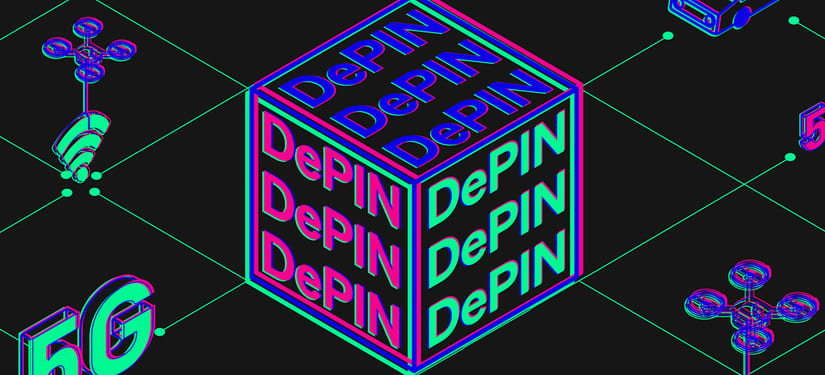TL;DR
- DePIN networks are expanding into telecommunications, energy, healthcare, and logistics, decentralizing physical infrastructure on a global scale.
- The adoption of Nodes-as-a-Service and the tokenization of physical resources are driving business models without intermediaries or proprietary hardware.
- Key challenges involve interoperability, physical security of the nodes, and governance models that prevent power concentration among large holders.
Throughout 2023 and 2024, we saw the emergence of projects like Helium and Filecoin, which proved that a user-powered network could manage wireless coverage or data storage without relying on a central authority. Today, that concept has evolved under the umbrella of Decentralized Physical Infrastructure Networks (DePIN). In 2025, these networks are undergoing multidimensional growth. Understanding their current state and next steps is essential for those looking to invest, get involved, or simply grasp where global infrastructure is heading.

DePIN in 2025: More Than an Experiment
The term DePIN gained traction after a few early adopters showed it was possible to contribute physical resources to a network and receive tokens as a reward. Those once-isolated initiatives have now turned into an innovation hub and a fast-growing industry. These networks already span telecommunications, storage, energy, logistics, healthcare, and AI computing. Thanks to smart contracts and tokenization, anyone can contribute resources — from solar panels to GPUs — and automatically earn rewards.
Key Sectors for the DePIN Industry
In the energy sector, companies like Power Ledger and Shell have piloted local microgrids where neighbors trade excess solar power and get tokens in return. In logistics, supply chain traceability has improved through blockchain’s immutable records, tracking every stage of a shipment.
In healthcare, DePIN networks offer a decentralized way to store medical records securely on the blockchain, with access controlled through token-managed permissions. These examples show how community-powered decentralization can cut costs and increase system resilience wherever it’s applied.

The Wireless Network Revolution
DeWi (Decentralized Wireless Networks) are the most visible face of the DePIN industry. Projects like Helium manage thousands of user-run access points, with individuals installing hotspots and earning tokens for every megabyte they relay. Proof-of-Coverage verification ensures the signal genuinely reaches devices. In 2025, growth is expected in the availability of Nodes-as-a-Service, making it easier for businesses and individuals to launch their own networks without setting up hardware from scratch.
Technical Limitations and Governance Conflicts
To scale and continue growing, DePIN networks must overcome several challenges. Each sector of this industry is developing its own standards, making it difficult to gradually and uniformly improve interoperability.
Security is also a concern: physical networks can suffer sabotage or device theft, and smart contracts require constant auditing to prevent exploits. In terms of governance, token distribution must avoid power concentration among a few players and ensure voting mechanisms don’t end up controlled by major holders.

Waiting for Clear Regulation
Until now, the DePIN industry has largely operated without clear legal frameworks. However, regulators are beginning to acknowledge the need for oversight due to its growing impact in sectors like energy and telecommunications, where strict licensing applies. Throughout 2025, we’ll see the introduction of specific guidelines for node operations, reporting obligations, and mandatory security protocols. This won’t slow down the communities sustaining these projects — it will give them legal clarity and attract institutional investment.
Investment Outlook: A Booming Industry
Venture capital funds have increased their investment in DePIN projects by 40% since 2023. That capital is flowing both to startups developing specialized hardware and middleware platforms connecting devices to blockchains. For investors, the key lies in choosing networks that have already validated their technology and built active communities ready to contribute new nodes.
The growing demand for nodes will open opportunities for turnkey infrastructure providers — bundles of hardware, software, and support — for companies eager to experiment with DePIN networks without investing in R&D.
Consulting firms will also emerge to help integrate DePIN solutions with legacy systems in major industries. Those who master secure node configuration and multi-blockchain integrations will find demand in diverse fields like precision agriculture and urban waste management.
What’s Next: Smart Cities and Beyond
In the final stretch of 2025, projects are multiplying that combine DePIN with smart cities and industrial IoT. Imagine distributed sensors optimizing traffic routes in real time, or energy meters that automatically bill neighbors under smart contracts. These applications will require public-private partnerships and defined communication standards. Once those pieces fall into place, we’ll see large-scale deployments.
Conclusion
DePIN is no longer a promise: it’s a thriving innovation space with tangible applications and growing international communities. For users, it means access to cheaper, more resilient services. For industry, it represents a way to optimize resources and unlock new business models.
Those who start building nodes, developing robust smart contracts, or getting involved in governance today will be better positioned in the future to fully capitalize on this technology’s potential.











